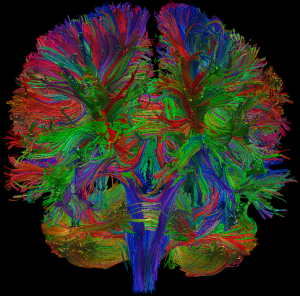Movement Is An Essential Nutrient
Posted on 21/11/2022
21 Enterprise House, Kingsway North, Team Valley, Gateshead, NE11 0SR
Your brain retains a remarkable ability to learn and grow throughout your life.
 Whether it’s mastering the art of walking, learning how to play a musical instrument, or hard wiring a recent experience into your long or short term memory research shows that your capacity for learning, growth and other neurological functioning is closely linked to the number of communication channels that are built between nerve cells in differing parts of your brain (called “neuroconnectivity”), and the dynamic, ongoing remodelling of these “neural communication pathways” that takes place in the brain as it “rewires” itself in response to learning from new experiences (called “neuroplasticity”).
Whether it’s mastering the art of walking, learning how to play a musical instrument, or hard wiring a recent experience into your long or short term memory research shows that your capacity for learning, growth and other neurological functioning is closely linked to the number of communication channels that are built between nerve cells in differing parts of your brain (called “neuroconnectivity”), and the dynamic, ongoing remodelling of these “neural communication pathways” that takes place in the brain as it “rewires” itself in response to learning from new experiences (called “neuroplasticity”).
In essence, a healthy brain retains a strong capacity for neuroconnectivity and neuroplasticity throughout our lives, whereas mental decline and dementia are associated with a progressive loss of these two phenomena.
The good news is that there are many lifestyle based things we can do to enhance and stimulate the neuroconnectivity and neuroplasticity of our nervous system. Movement and sleep are two natural events that reinforce these processes, but special forms of brain exercises known as “Neurobics” can help as well.
Neurobics
These “associations” (eg. putting a name together with a face, a smell together with a food, and so on) are the building blocks of memory and the basis of how we learn, so in stimulating this process these exercises help us to grow a more powerful, enduring and efficient brain that has greater resistance to cognitive decline and other effects associated with ageing.
The scientific basis of neurobics is explained more fully here, but the key principles of neurobic exercises include:
Neurobic Exercises Cause Brain Cells To Produce Their Own Natural Nutrients
These exercises stimulate patterns of neural activity between nerve cells in different areas of the brain, and in doing so cause nerve cells to produce natural brain nutrients (called neutrophins) that dramatically increase the size and complexity of nerve cell connections, and make surrounding cells stronger and more resistant to the effects of ageing.
It’s almost as if these exercises are causing the brain to fertilise itself, and how cool is that?
Neurobic Exercises Create Associations Between Differing Parts Of The Brain
Unexpected experiences that engage more than one sense create strong connections between different parts of the brain, especially if the experience engages your emotions as well.
For example, say somebody gives you a rose. Your visual system recognises that it’s a rose, and if that’s all that happens it will be a nice experience you remember for a while, but then it will fade.
But say you then smell the rose, whilst at the same time being aware of soft candlelight and lovely music, and whilst doing so you prick a finger on one of its thorns. Hey presto, you’ve just activated a far greater range of senses (including an emotional one) and created much stronger associations which means the memory is more deeply implanted in your nervous system to be fondly remembered for years to come.
The Olfactory System (i.e. Smell) Is The Only Sense That Has Direct Connections To The Emotional Centres Of Your Brain
Nowadays smell has a diminished role in our daily lives, but associations based on odours form rapidly and persist for a very long time. Remember your first loves favourite perfume? Or the first time you smelt a real Christmas tree? Associations based on smell can be very powerful and trigger an abundance of memories because of this direct link to the emotional centres of your brain.
The Brain Likes Novelty
 The brain fires up more powerfully when it’s exposed to novel (and preferably multi sensory) experiences, whereas familiar routines can be brain deadening.
The brain fires up more powerfully when it’s exposed to novel (and preferably multi sensory) experiences, whereas familiar routines can be brain deadening.
To illustrate this, sign your name with your normal dominant hand. You can do it automatically, it’s not too challenging, and there’s relatively little neural activation.
But now try and sign your name with your non dominant hand. Obviously, that’s a bit trickier, and if you were wired up to a machine that detected brain activity as you carried out this task it would show much higher neural activation than if you were using your dominant hand. And you can probably guess what your brain would be showing if you were standing in a bank trying to cash a cheque using your non dominant hand whilst a wary bank manager was giving you the evil eye.
The bottom line is your brain gets a much better workout when it’s exposed to novel, unexpected, multi sensory experiences, and is much less activated by experiences that have become routine.
Examples Of Neurobic Exercises
At the end of the day, neurobic exercises help keep your brain more agile and flexible, and enhance its ability to take on any mental challenge, including memory, task performance, and creativity based challenges.
It’s easy to find simple ways to change everyday routines to stimulate your brain give it a great neurobic workout – here’s a few suggestions to get you started, and you’ll find many more on the website mentioned earlier in this article:
This exercise fires up the nerves on the opposite side of the brain to that which you normally use, resulting in rapid expansion of connections in the parts of the brain controlling that movement.
Reading aloud and listening to someone reading uses different neuronal circuitry than when we read silently, and engages the brain in a far more active process. It can also be great for your relationship as well!
In the social meal turn off the T.V., the music and other distractions and have everyone sit down and talk to one another. It’s great for staying connected with one another, and social experiences are very powerful at “building your brain”.
But then mix it up. Have one meal a week where all distractions are still turned off, but there’s also no chat. Get people to give their undivided attention to savouring the taste and texture of the meal, and the ambience of the quiet, and maybe share your thoughts on the experience once the meal is over. Oh, and don’t always sit in the same chairs at mealtimes!
Whether it’s on your journey to work, where you walk the dog, or where you go out jogging, mix it up to get different views, perspectives and scenery to keep the brain stimulated.
If you don’t cycle much, go exploring on a cycling holiday. If you go to the same place every year, go somewhere else, and so on. The whole point is to use the imagination to stimulate the brain in new and novel ways.
Games are great for stimulating the senses. Maybe it’s a children’s game like charades, or maybe it can be an adult’s game like trying to identify a set of wines by their smell and taste. Either way, make it fun and novel so it’s good for the brain.
Sex can be a great aerobic workout, but it can be a great neurobic work out as well. Introducing the thrill of the new can be very stimulating. Perhaps it’s rose petals on the bed, a sensuous massage, some lovely fragrant oils, or making love under the stars. Hopefully you can come up with plenty of other great ideas for loving intimacy as well, and remember – it’s good for your brain!
Keep Your Brain Alive, Movement Keeps Your Brain Healthy, The Real Reason Children Need To Exercise